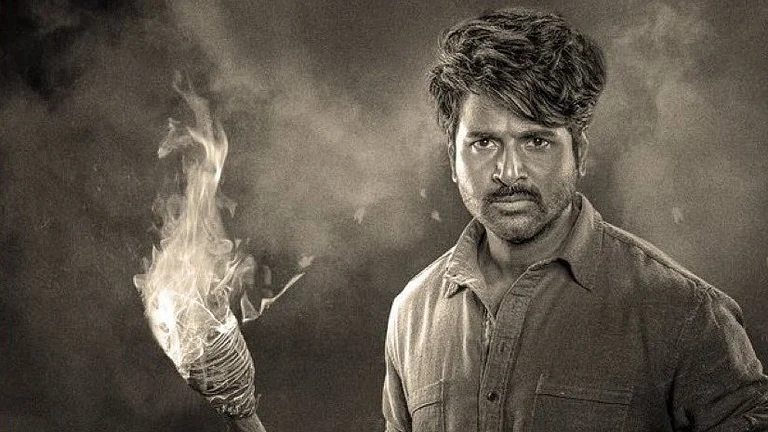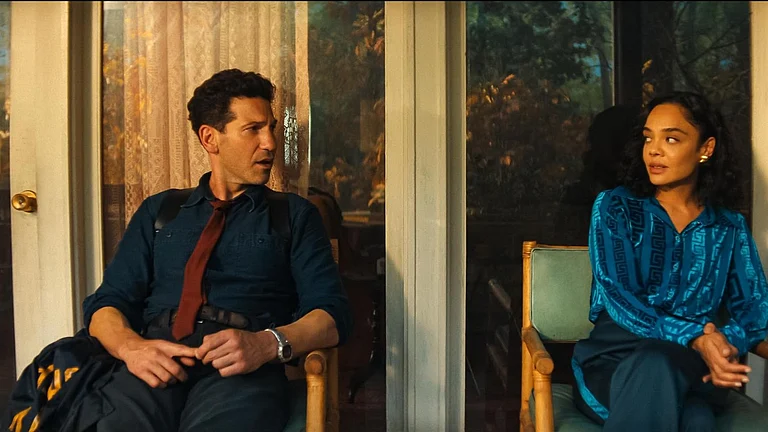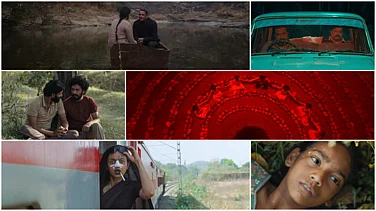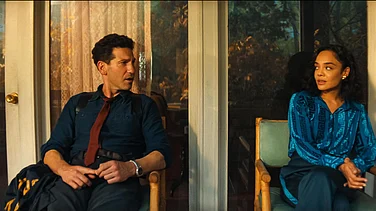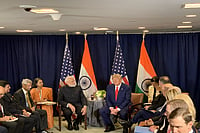SITTING in a gold Rolls Royce at London's Leicester Square, Pankuj Parashar goaded friend and producer Tutu Sharma, "Let's make a Rolls Royce of a film." A king's ransom of Rs 9.6 crore was spent and when the extravagant costume drama, Raajkumar , premiered at Novelty Cinema on March 20, it was Parashar and Sharma's fantasy come true. That Chief Minister Manohar Joshi sat through the entire film—joking that he hoped to find a prince for his daughter—was their crowning glory. The film has had 55 prints released in the western region since then—running on the steam of the winning Anil Kapoor-Madhuri Dixit combo, coupled with the fact that the movie has used effects never seen before in the history of Indian cinema.
For instance, a castle enclosing a city cost the makers close to a crore. The last time a set of this magnitude was constructed was during the making of Mughal-e-Azam . In that sense, the film is a classic example of going back to the future—what Parashar aptly describes as "the meeting of George Lucas (of Star Wars fame) and Mughal-e-Azam ". Set in the middle ages, the plot is not half as extraordinary as the effects used in it. A Robin Hood royal, a princess, warring kingdoms, a Machiavellian minister, a happy ending—it's all there. And magically, what's not there—and here's the catch—also appears on screen. Three virtual sets, 57 special effects and 90 seconds of animation were created for the film by a seven-member team from Tata Consultancy Services (TCS). "The titles appear with the flutter of flames, leading to the dramatic introduction of Naseeruddin Shah. Flames leap out of the high pillars of the castle, complete with a high shot of Naseer. This kind of a shot would have been virtually impossible unless a helicopter was used. But the copter would have blown up taking Naseer with it," says Cyrus Shroff, associate consultant, TCS. Using graphic supercomputers, the Onyx, smaller work stations such as the Indigo, hours of experimentation and hard work made the impossible possible. "Madhuri can be made to dance on the ceiling or the walls if need be. Her creativity doesn't have to be curbed by the physical environment," adds Shroff.
Initially, Madhuri was not particularly keen on these make-believe worlds, especially since she markets another one herself. Hence, though freedom and flexibility from conventional filmmaking had been introduced with virtual sets, the questions and quizzical gestures were inevitable. Says Parashar: "Choreographer Saroj Khan, who otherwise never needs a re-shoot, specifically asked for it. Madhuri laughed when she saw the blue screen technology being used. The final result and the stunning visual impact had them converted." With the cost-effectiveness and the magnitude of manipulation the technology allows, it could save a lot of hard work for stars and stuntmen in future too.
"With these kind of systems in operation, Akshay Kumar needn't jump off high rises and through glass anymore. Even Arnold Schwarzenegger doesn't do it," says Parashar. But the director had other problems—since many sets were designed on computer, it was doubly difficult to match the image on screen with the actual.
Also, there were the unavoidable scraps with the censors. The film has had its share of close shaves with the Censor Board when trees were burnt using computer graphics. "The censors objected to the burning on environmental grounds," says Parashar.
Says Kamlesh Pandey, dialogue-writer: "The sheer technical brilliance holds the film. For a change, people will stay for the visuals instead of the songs." Critics, however, believe that if not for anything else, Madhuri's swaying hips will draw the crowds. "A film works in totality. I don't think only special effects can make or break it," opines Sharma. At some theatres, tickets are being sold at a premium.
The TCS team is, however, more concerned about the future of computer-aided special effects in films. "Computer graphics is an integral part of filmdom—at least to meet with post-production requirements. I think it will merely be a matter of time before filmmakers abroad will source their entertainment software requirements from us," adds Shroff.
Raajkumar is the most expensive film to date. But initial feelers are ominous: if it meets with anything short of a box office bang, it could well be the biggest blunder too. As pundits predict, probably of the same size and as spectacular as the dinosaurs in Jurassic Park .









